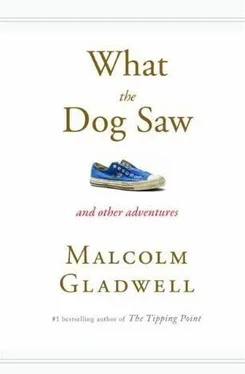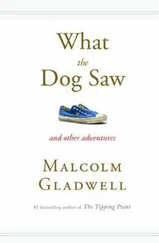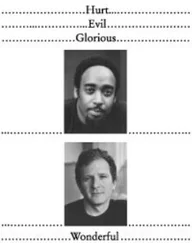Roy Hazelwood sat next to Douglas. A lean chain-smoker, Hazelwood specialized in sex crimes, and went on to write the bestsellers Dark Dreams and The Evil That Men Do. Beside Hazelwood was an ex-Air Force pilot named Ron Walker. Walker, Douglas writes, was “whip smart” and an “exceptionally quick study.” The three bureau men and the two detectives sat around a massive oak table. “The objective of our session was to keep moving forward until we ran out of juice,” Douglas writes. They would rely on the typology developed by their colleague Robert Ressler, himself the author of the true-crime bestsellers Whoever Fights Monsters and I Have Lived in the Monster. The goal was to paint a picture of the killer—of what sort of man BTK was, and what he did, and where he worked, and what he was like—and with that scene Inside the Mind of BTK begins.
We are now so familiar with crime stories told through the eyes of the profiler that it is easy to lose sight of how audacious the genre is. The traditional detective story begins with the body and centers on the detective’s search for the culprit. Leads are pursued. A net is cast, widening to encompass a bewilderingly diverse pool of suspects: the butler, the spurned lover, the embittered nephew, the shadowy European. That’s a whodunit. In the profiling genre, the net is narrowed. The crime scene doesn’t initiate our search for the killer. It defines the killer for us. The profiler sifts through the case materials, looks off into the distance, and knows . “Generally, a psychiatrist can study a man and make a few reasonable predictions about what the man may do in the future—how he will react to such-and-such a stimulus, how he will behave in such-and-such a situation,” Brussel writes. “What I have done is reverse the terms of the prophecy. By studying a man’s deeds, I have deduced what kind of man he might be.” Look for a middle-aged Slav in a double-breasted suit. Profiling stories aren’t whodunits; they’re hedunits.
In the hedunit, the profiler does not catch the criminal. That’s for local law enforcement. He takes the meeting. Often, he doesn’t write down his predictions. It’s up to the visiting police officers to take notes. He does not feel the need to involve himself in the subsequent investigation, or even, it turns out, to justify his predictions. Once, Douglas tells us, he drove down to the local police station and offered his services in the case of an elderly woman who had been savagely beaten and sexually assaulted. The detectives working the crime were regular cops, and Douglas was a bureau guy, so you can imagine him perched on the edge of a desk, the others pulling up chairs around him.
“ ‘Okay,’ I said to the detectives…‘Here’s what I think,’” Douglas begins. “It’s a sixteen- or seventeen-year-old high school kid…He’ll be disheveled-looking, he’ll have scruffy hair, generally poorly groomed.” He went on: a loner, kind of weird, no girlfriend, lots of bottled-up anger. He comes to the old lady’s house. He knows she’s alone. Maybe he’s done odd jobs for her in the past. Douglas continues:
I pause in my narrative and tell them there’s someone who meets this description out there. If they can find him, they’ve got their offender.
One detective looks at another. One of them starts to smile. “Are you a psychic, Douglas?”
“No,” I say, “but my job would be a lot easier if I were.”
“Because we had a psychic, Beverly Newton, in here a couple of weeks ago, and she said just about the same things.”
You might think that Douglas would bridle at that comparison. He is, after all, an agent of the Federal Bureau of Investigation, who studied with Teten, who studied with Brussel. He is an ace profiler, part of a team that restored the FBI’s reputation for crime-fighting, inspired countless movies, television shows, and bestselling thrillers, and brought the modern tools of psychology to bear on the savagery of the criminal mind—and some cop is calling him a psychic . But Douglas doesn’t object. Instead, he begins to muse on the ineffable origins of his insights, at which point the question arises of what exactly this mysterious art called profiling is, and whether it can be trusted. Douglas writes,
What I try to do with a case is to take in all the evidence I have to work with… and then put myself mentally and emotionally in the head of the offender. I try to think as he does. Exactly how this happens, I’m not sure, any more than the novelists such as Tom Harris who’ve consulted me over the years can say exactly how their characters come to life. If there’s a psychic component to this, I won’t run from it.
In the late 1970s, John Douglas and his FBI colleague Robert Ressler set out to interview the most notorious serial killers in the country. They started in California, since, as Douglas says, “ California has always had more than its share of weird and spectacular crimes.” On weekends and days off, over the next months, they stopped by one federal prison after another, until they had interviewed thirty-six murderers.
Douglas and Ressler wanted to know whether there was a pattern that connected a killer’s life and personality with the nature of his crimes. They were looking for what psychologists would call a homology, an agreement between character and action, and after comparing what they learned from the killers with what they already knew about the characteristics of their murders, they became convinced that they’d found one.
Serial killers, they concluded, fall into one of two categories. Some crime scenes show evidence of logic and planning. The victim has been hunted and selected in order to fulfill a specific fantasy. The recruitment of the victim might involve a ruse or a con. The perpetrator maintains control throughout the offense. He takes his time with the victim, carefully enacting his fantasies. He is adaptable and mobile. He almost never leaves a weapon behind. He meticulously conceals the body. Douglas and Ressler, in their respective books, call that kind of crime organized.
In a disorganized crime, the victim isn’t chosen logically. She’s seemingly picked at random and “blitz-attacked,” not stalked and coerced. The killer might grab a steak knife from the kitchen and leave the knife behind. The crime is so sloppily executed that the victim often has a chance to fight back. The crime might take place in a high-risk environment. “Moreover, the disorganized killer has no idea of, or interest in, the personalities of his victims,” Ressler writes in Whoever Fights Monsters. “He does not want to know who they are, and many times takes steps to obliterate their personalities by quickly knocking them unconscious or covering their faces or otherwise disfiguring them.”
Each of these styles, the argument goes, corresponds to a personality type. The organized killer is intelligent and articulate. He feels superior to those around him. The disorganized killer is unattractive and has a poor self-image. He often has some kind of disability. He’s too strange and withdrawn to be married or have a girlfriend. If he doesn’t live alone, he lives with his parents. He has pornography stashed in his closet. If he drives at all, his car is a wreck.
“The crime scene is presumed to reflect the murderer’s behavior and personality in much the same way as furnishings reveal the homeowner’s character,” we’re told in a crime manual that Douglas and Ressler helped write. The more they learned, the more precise the associations became. If the victim was white, the killer would be white. If the victim was old, the killer would be sexually immature.
“In our research, we discovered that… frequently serial offenders had failed in their efforts to join police departments and had taken jobs in related fields, such as security guard or night watchman,” Douglas writes. Given that organized rapists were preoccupied with control, it made sense that they would be fascinated by the social institution that symbolizes control. Out of that insight came another prediction: “One of the things we began saying in some of our profiles was that the UNSUB”—the unknown subject—“would drive a policelike vehicle, say a Ford Crown Victoria or Chevrolet Caprice.”
Читать дальше











